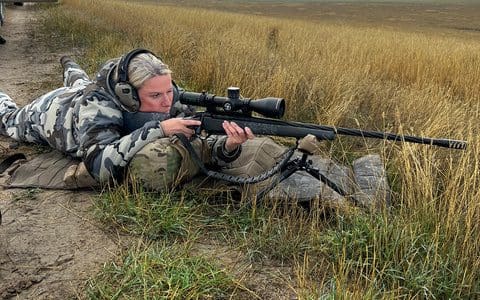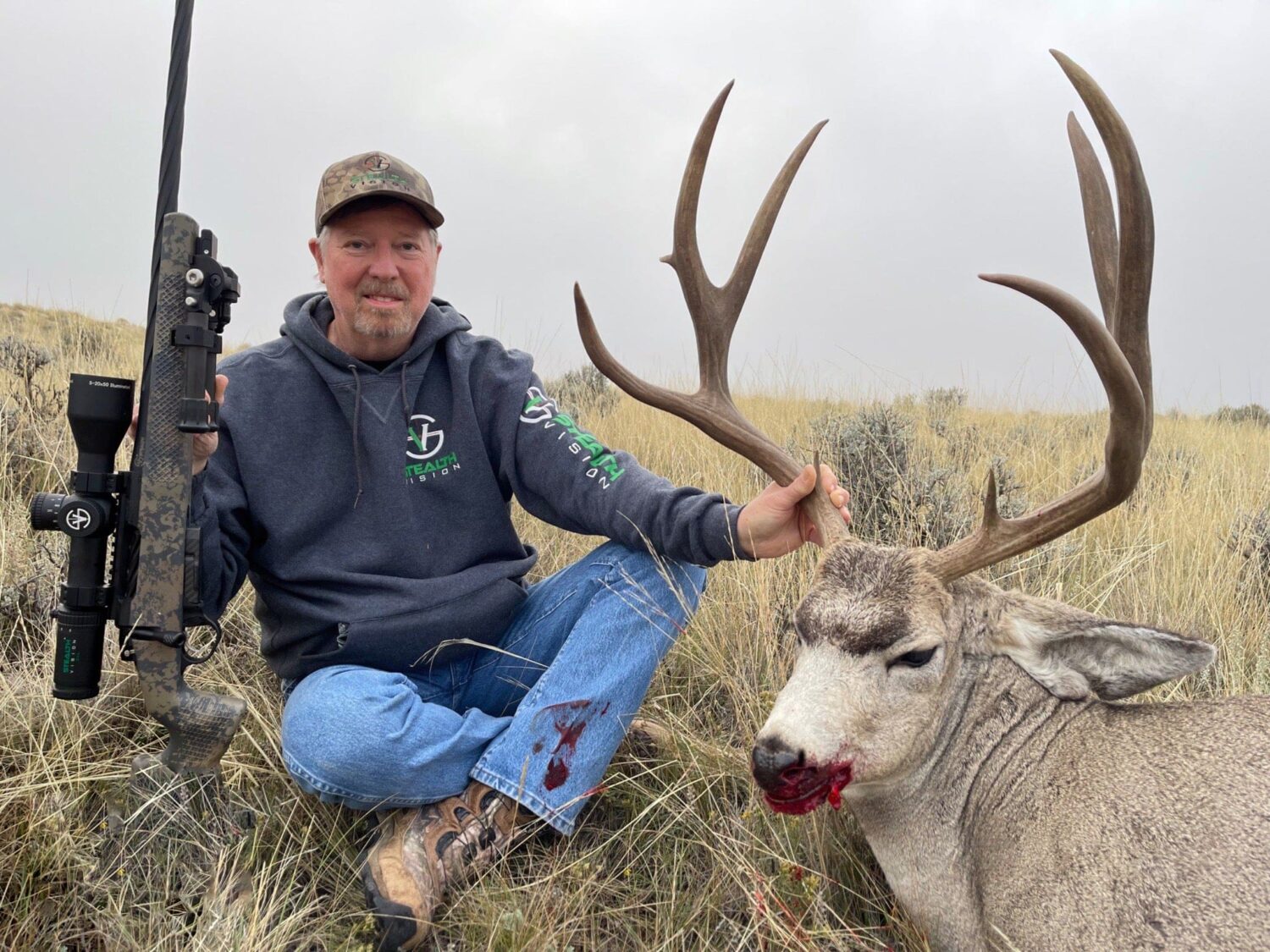News
Tips for Hunting with Dogs – A Comprehensive Guide
The bond between humans and dogs extends far beyond mere companionship; it is a partnership that has thrived throughout history, especially when it comes to hunting.
Dogs have been by our side, using their exceptional senses and instincts to aid us in our pursuit of game.
Today, hunting with dogs remains a cherished tradition that not only enhances success in the field but also enriches connection with nature and our canine companions.
Whether you’re a seasoned hunter or a beginner interested in developing a strong partnership with your canine companion, this guide will offer valuable insights and advice to help you and your dog excel in the field.
Selecting a Suitable Hunting Dog Breed
Common Hunting Dog Breeds and Their Uses
Retrievers
These breeds excel in locating and retrieving downed game, particularly waterfowl.
Some popular retriever breeds include Labrador Retrievers, Golden Retrievers, and Chesapeake Bay Retrievers. They are known for their strong swimming ability, soft mouth, and keen sense of smell.
Pointers
Pointers specialize in helping you locate game by pointing their bodies towards the animal’s position.
English Pointers, German Shorthaired Pointers, and Vizslas are among the most popular pointer breeds. Their agility, speed, and endurance make them ideal for hunting upland game birds.
Spaniels
Often called bird dogs, Spaniels are skilled in flushing out game from dense cover, making them excellent partners for hunting upland game birds and small mammals.
Some well-known spaniel breeds include the English Springer Spaniel, American Cocker Spaniel, and Boykin Spaniel. They are renowned for their stamina, agility, and enthusiastic working style.
Hounds
Hounds possess remarkable scent-tracking abilities, making them perfect for hunting various game, including deer, rabbits, and raccoons.
This group includes scent hounds such as the Beagle, Bloodhound, and Basset Hound, as well as sighthounds like the Greyhound and Irish Wolfhound. Hounds are known for their stamina, persistence, and keen senses.
Terriers
Terriers are tenacious hunters, primarily used for hunting small game like rodents and vermin.
Breeds such as the Jack Russell Terrier, Airedale Terrier, and Border Terrier are adept at locating, chasing, and sometimes even dispatching their quarry.
Terriers are characterized by their courage, determination, and high energy levels.
Matching Breed Traits to Hunting Styles and Game Preferences
To choose the best hunting breeds for your needs, consider the type of game you plan to hunt and the terrain.
Each breed has unique traits and abilities suited to specific tasks, so aligning your hunting objectives with the dog’s inherent skills is crucial.
For instance, if you primarily hunt waterfowl, a retriever with a strong swimming ability and a gentle mouth would be ideal.
On the other hand, if you prefer hunting upland game birds, a pointer or spaniel may be a better match.
Additionally, consider your preferred hunting style, as some breeds are better suited for close-range hunting, while others excel at covering large distances.
By carefully evaluating your hunting preferences and researching breed-specific characteristics, you can select a canine companion that will complement your hunting experience and contribute to a successful partnership.
Training Essentials for Hunting Dogs
Early Training and Socialization

Start Young
Introduce your puppy to basic obedience training and socialization as early as possible, preferably between 8 to 16 weeks of age. Exposing your dog to various sights, sounds, and smells during this critical period will help them develop confidence and adaptability.
Basic Obedience
Teach your dog essential commands such as “sit,” “stay,” “come,” and “heel.” These commands will form the foundation for more advanced hunting skills and ensure your dog’s safety and control in the field.
Introduction to the Field
Gradually expose your dog to the outdoor environment, taking them on nature walks and familiarizing them with different terrains. Encourage your dog to explore and use its senses while reinforcing basic obedience commands in various settings.
Field Training and Advanced Skills
Retrieving
Teach your dog to fetch using dummies or toys, gradually increasing the difficulty by adding weight, distance, and distractions. Introduce your dog to water for waterfowl hunting and practice retrieving exercises in shallow and deep water.
Tracking
Train your dog to follow scents by laying scent trails using game bird wings or drag. Start with short, simple trails and gradually increase the complexity as your dog’s tracking ability improves.
Pointing
For pointing breeds, introduce them to the concept of pointing by using a bird wing attached to a fishing line or a live bird in a launcher. Reward your dog for holding a point and gradually incorporate steadiness to wing, shot, and fall.
Flushing
For flushing breeds, teach your dog to quarter the field and search for game systematically. Encourage your dog to use its nose and build its drive to find deer by using scent training and controlled exposure to live birds.
Emphasizing Patience and Consistency in Training
Training a hunting dog requires dedication, patience, and consistency. Maintaining a regular training schedule and setting realistic expectations for your dog’s progress is essential.
Break down complex tasks into smaller steps, and always use positive reinforcement to reward your dog’s accomplishments.
Remember that each dog learns at a different pace, and the key to success lies in developing a strong bond and understanding between you and your canine companion.
Preparation for Hunting Expeditions
Building Your Dog’s Physical Fitness
Regular Exercise
Ensure your dog receives regular exercise to develop strength, endurance, and agility. Incorporate activities such as jogging, swimming, and hiking into your routine to condition your dog for the demands of deer hunting.
Tailored Conditioning
Adjust your dog’s exercise regimen to match the specific requirements of your hunting style. For example, if you hunt waterfowl, incorporate more swimming exercises to build your dog’s stamina in the water.
Monitoring Health
A good hunting dog should be healthy. Regularly assess your dog’s overall health, including weight, muscle tone, and joint mobility. Consult your veterinarian to determine the appropriate diet and exercise plan for your dog’s age, breed, and hunting requirements.
Introducing Your Dog to Hunting Equipment
Firearms

Gradually expose your dog to the sound of gunfire, starting from a distance and slowly working closer. Use smaller caliber firearms initially and always ensure your dog is in a controlled and positive environment to prevent the development of gun shyness.
Whistles
Familiarize your dog with whistle commands during training. Use consistent whistle patterns to signal commands, such as stopping, recalling, or changing direction.
Vests and Harnesses
Before the hunting season starts, introduce your dog to wearing protective gear, such as a hunting vest or harness. This will ensure your dog is comfortable and accustomed to wearing the equipment in the field.
Ensuring Up-To-Date Vaccinations and Preventative Care
Vaccinations
Consult with your veterinarian to ensure your dog is up to date with all necessary vaccinations, including rabies, distemper, and leptospirosis.
Parasite Prevention
Protect your dog from fleas, ticks, and heartworms by administering appropriate preventative treatments as your veterinarian recommends.
Health Check
Schedule a veterinary check-up before the hunting season to identify and address any potential health issues that may affect your dog’s performance in the field.
Safety Considerations for Hunting with Dogs
Choosing Appropriate Safety Gear for Dogs
Reflective Collars and Vests
Equip your dog with a reflective collar and vest to increase visibility in the field, particularly during early morning or late evening hunts. This will help prevent accidents and ensure the safety of your canine companion.
GPS Tracking Devices
Attach a GPS tracking device to your dog’s collar or harness to monitor their location while hunting. This can be particularly helpful in dense forests or vast terrains with limited visibility.
Protective Boots
Consider using protective boots for your dog if hunting in rough terrain or areas with sharp rocks, thorns, or cacti. This will help protect your dog’s paws from cuts and injuries.
Practicing Gun Safety Around Dogs
Muzzle Control
Dog hunting is also about keeping your canine companion safe. Always be aware of your hunting rifle’s muzzle direction, ensuring it is pointed away from your dog and other hunting partners.
Safe Zones
Establish safe shooting zones, considering the location of your dog and other hunters. Avoid shooting in the direction of your dog or when they are close to the line of fire.
Unloading Firearms
When not actively hunting, unload your firearm and engage the safety. This minimizes the risk of accidental discharges that could harm your dog or fellow hunters.
Recognizing and Adapting to Weather Conditions and Dog Limitations
Weather Conditions
Be aware of the weather conditions during your hunting expedition. Extreme heat, cold, or wet conditions can impact your dog’s health and performance. Take appropriate measures to protect your dog, such as providing shade, water, or shelter.
Know Your Dog’s Limits
Responsible dog hunters recognize their canine’s physical and mental limitations, and avoid pushing them beyond their capacity. Pay attention to signs of fatigue, injury, or stress, and adjust your hunting plans accordingly.
First Aid
Carry a canine-specific first aid kit and familiarize yourself with basic dog first aid procedures. This will allow you to address any injuries or emergencies that may occur while hunting.
Developing Hunting Techniques with Your Dog
Utilizing Your Dog’s Natural Instincts in the Field
Observe and Learn
Pay attention to your dog’s natural abilities and instincts during training and hunting. This will help you understand how to work together effectively and capitalize on their strengths.
Adapt to Your Dog’s Style
Each dog has its unique hunting style. Adapt your hunting strategies to complement your dog’s skills and preferences, ensuring a successful partnership.
Encourage and Reward
Reinforce your dog’s natural instincts by rewarding its successes in the field. This will boost their confidence and drive, improving their performance during hunts.
Post-Hunt Care and Continued Training
Assessing Your Dog for Injuries After Hunting
Check for Injuries
Thoroughly inspect your dog for any cuts, scrapes, or injuries sustained during the hunt. Pay particular attention to their paws, legs, and underbelly, where injuries are most likely to occur.
Remove Burrs and Debris
Carefully remove any burrs, thorns, or debris caught in your dog’s fur, ears, or between their toes.
Address Minor Injuries
Clean and treat minor wounds with appropriate first aid supplies from your canine-specific first aid kit. Consult your veterinarian if you need clarification on the severity of an injury or if it requires professional attention.
Grooming and Cleaning Your Dog
Brush Your Dog’s Coat
Use a suitable brush or comb to remove dirt, debris, and loose hair from your dog’s coat. Regular grooming helps maintain your dog’s overall health and prevents matting.
Bathe Your Dog
If necessary, give your dog a bath with a mild dog shampoo to remove dirt and odors from their coat. Ensure your dog is thoroughly dry before allowing them back indoors, especially during colder months.
In addition, gently clean your dog’s ears with a damp cloth or an ear-cleaning solution recommended by your veterinarian. This will help prevent ear infections caused by dirt or moisture.
Reinforcing Training
Review and Adjust Training
Reflect on your dog’s performance during the hunt and identify areas requiring further training or improvement. Continuously refine your dog’s skills to ensure their ongoing progress and success.
Off-Season Maintenance
Maintain your dog’s fitness, obedience, and hunting skills during the off-season through regular exercise, training sessions, and socialization. This will keep your dog engaged and prepared for the next hunting season.
Final Thoughts
Hunting with dogs is a rewarding and fulfilling experience that builds on the deep bond between humans and their canine companions.
By carefully selecting a suitable breed, providing proper training, and prioritizing safety and preparation, you can enhance your hunting experience and cultivate a successful partnership with your dog.
Remember; consistency, patience, and a strong understanding of your dog’s needs and abilities are essential to achieving the best results in the field.


